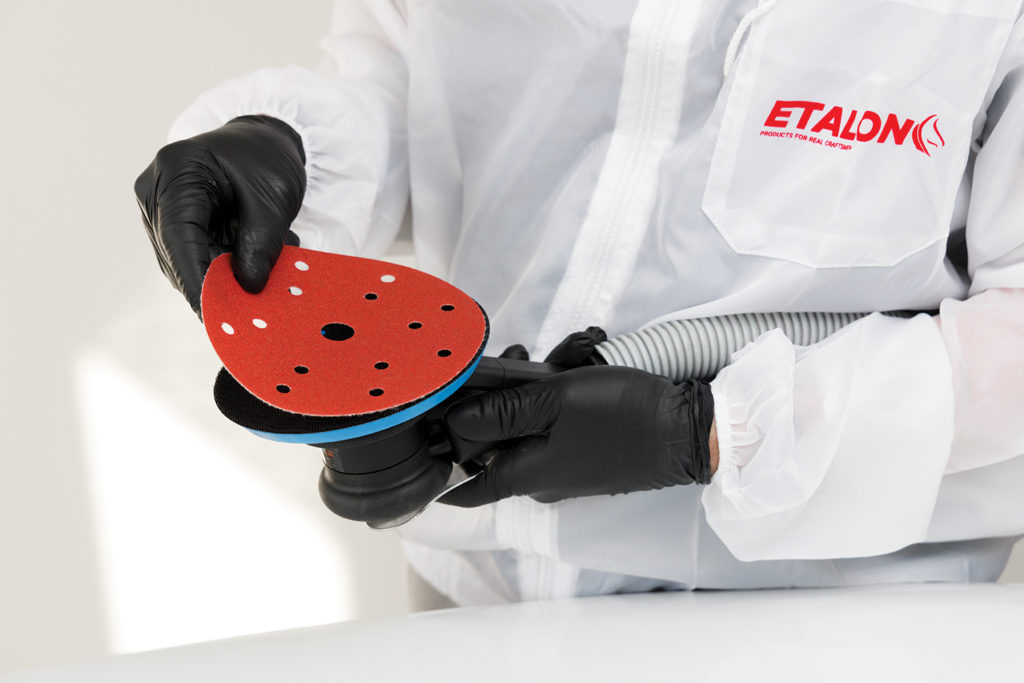Introduction
Sanding machines are essential tools in car refinishing and various other industries where the surface finish of a material needs improvement. These sanding machines come in various types, but one critical factor that distinguishes them is the size of their orbit. The orbit size in a sanding machine plays a crucial role in determining the quality and efficiency of the sanding process. In this article, we will explore the different orbit sizes in sanding machines and their importance in achieving the desired results.
What is Orbit Size in Sanding Machines?
The orbit size in a sanding machine refers to the diameter of the circular motion created by the sanding pad or abrasive disc as it rotates. This circular motion is responsible for the abrasive action that smoothens and refines the surface of the material being sanded. Sanding machines typically come in two main orbit sizes: 5 mmand 3 mm or close.

5 mm Orbit
Sanding machines with a 5 mm orbit size are known as “random orbital sanders.” These machines strike a balance between material removal and surface finish quality. Random orbital sanders with 5mm orbit are versatile and can handle a wide range of sanding tasks, from rough sanding to fine finishing. They are particularly popular among car painters for their ability to deliver efficient sanding of body fillers and putties.
3 mm Orbit
Sanding machines with a 3 mm orbit size are often called “finish sanders” or “detail sanders.” These machines have the smallest orbit size, resulting in a very fine and precise sanding action. They are primarily used for finishing touches, smoothing out small imperfections, and preparing surfaces for painting or staining. These sanders excel at creating a high-quality, smooth finish, but they are less efficient at material removal compared to larger orbit sanders. Sanding machines with the orbit of 3 mm are ideal for primer sanding and defects removal on a paint or clearcoat.

The Importance of Choosing the Right Orbit Size
Selecting the appropriate orbit size in a sanding machine is crucial to achieving the desired results in a given sanding application. Here are some key considerations:
Material Type: Different materials require different orbit sizes. Harder materials may benefit from larger orbits for efficient material removal, while softer materials like wood may require smaller orbits to prevent over-sanding and surface damage.
Sanding Task: Consider the specific sanding task at hand. Are you rough sanding, finishing, or performing polishing work? The orbit size should match the level of precision and material removal needed.
Surface Finish: If your project demands a high-quality, smooth finish, a smaller orbit size is generally preferable. Larger orbits may leave visible sanding marks that require more extensive finishing work.
Operator Comfort: Smaller orbit sanders are typically more comfortable to use for extended periods due to reduced vibration and user fatigue, making them a popular choice for professionals.
Conclusion
In the world of sanding machines, the orbit size is a critical factor that greatly influences the outcome of your sanding projects. Understanding the differences between 5 mm and 3 mm orbit sizes and their respective advantages is essential for achieving the best results. By selecting the right orbit size for your specific task and material, you can ensure efficient material removal, superior surface finish quality, and a more comfortable sanding experience. Choosing the appropriate orbit size will contribute significantly to the success of your sanding endeavors.




